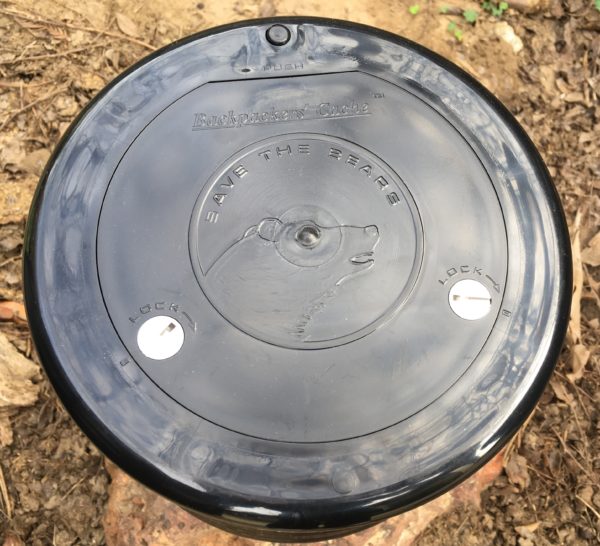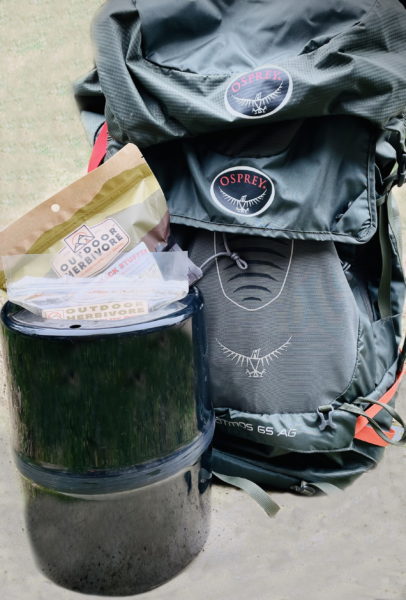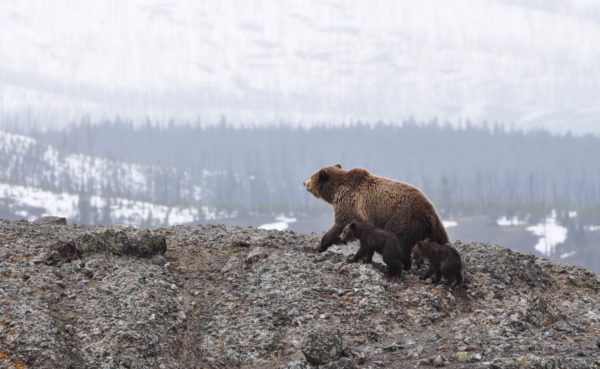
Carrying a bear canister is something that backpackers must do when spending a night in most US National Parks and the California Sierra.
The heavy rigid canisters dominate the list of approved bear-resistant canisters because they have a long history of demonstrating their effectiveness. The problem is that they’re bulky and cumbersome, making it tempting to forego carrying one altogether or opt for a lighter non-approved one.
Don’t do it!
Rangers may ask you to provide proof of your bear canister. If you don’t have an approved container, you will be told to leave the trail and will likely receive a costly citation. Enforcement of this law is for a good reason, however.
A fed bear is a dead bear.
The best way to protect bears is by preventing them from obtaining human food and garbage. When bears associate humans with food, the result can be disastrous. The bear can become aggressive with people in the pursuit of food. Rangers are obliged to kill such “problem bears” for the safety of humans.
Thus, storing food and waste in an approved canister is the most effective method for preventing bears from getting your food and saving them.
Approved Bear Resistant Food Canisters (BRFC)
Regulations vary between National Parks and National Forests on where bear canisters are required and which ones are approved. The Interagency Grizzly Bear Committee and the Sierra Interagency Black Bear Group test bear-resistant food containers and provide guidance on their effectiveness; however, neither agency is responsible for determining which containers are permitted. Each park management area currently decides which food storage technique and bear canister products are allowed in their area.
Some park offices rent bear canisters to backpackers staying overnight. The canisters are available for rent at staffed wilderness permit stations. Some places rent the BRFC for free, while others have a daily fee.
Where Bear Resistant Canisters are Required
As mentioned, each park area decides what bear canisters are permitted. This information changes frequently. You must check the park area website for the latest requirements, pick-up locations, and fees. If you are only day hiking, you can disregard this information. Day hikers are not required to secure carried food in bear canisters.
Here is the most current information (as of 2023) on where and when bear-resistant containers are required.
Alaska
Gates of the Arctic National Park – all treeless areas; canister rent is free.
Glacier Bay National Park – all treeless areas; canister rent is free.
Denali National Park – selected areas; canister rent is free.
California
Sierra Wild, jointly operated by the National Park Service, U.S. Forest Service, and Bureau of Land Management, provides an overview of allowed bear canisters in the Sierra and an overview map of where canisters are required in the Sierra.
Yosemite National Park – entire backcountry; daily canister rental fee.
Sequoia/Kings Canyon National Parks – selected areas from May 1 – Oct 31; daily canister rental fee.
Inyo National Forest – selected areas; daily canister rental fee.
Desolation Wilderness – selected areas within Eldorado National Forest and Lake Tahoe year-round; daily canister rental fee at Placerville Ranger Station.
Lassen Volcanic National Park – entire backcountry from Apr 16 – Nov 30; daily canister rental fee.
Colorado
Rocky Mountain National Park – entire backcountry below treeline from May 1 – Oct 31; daily canister rental fee at Estes Park Mountain Shop.
New York
The Adirondack Mountains Eastern High Peaks Wilderness – entire backcountry between Apr 1 – Nov 30; rentals available at many nearby outfitters.
Washington
Mt. Baker-Snoqualmie NF – entire backcountry starting in April 2023.
Olympic National Park – selected areas; daily canister rental fee at Wilderness Info Centers.
North Cascades National Park – selected areas from Jun 1 – Nov 15; canister rentals free at several park office locations.
Wyoming
Grand Teton National Park – entire backcountry unless food lockers are in place.
If you plan to stay overnight in a Grizzly Bear Recovery area (ID, MT, WA, WY), see this overview map for food storage regulations.
Tips For Using a Bear Canister

Generally, you want to keep your bear canister on the ground in an area that is not visible to a passing bear. Locate it at least 50 feet from your sleeping area and water sources. Canisters do not float and are not entirely watertight.
- Food Selection: Freeze-dried, calorie-dense backpacking food commercially sealed in compact barrier-proof packaging is best.
- Food Packing: Maximize usable space in the container by removing any bulky packaging from your food. Use a needle or pin to puncture a small hole on the top if there is excess air in the packaging.
- Toiletries Packing: All scented items should be packed in the bear canister at night.
- Leave non-essentials such as deodorant, shampoo, and makeup at home. Minimize essential toiletries such as sunscreen, contact lens saline solution, toothpaste, and bug spray by repacking them in small reusable containers. Powdered toothpaste saves on weight and can be stored in a ziplock bag.
- Night Storage: Ensure that the canister lid is secured and store 50 feet away from your sleeping area. Midnight snacker? Place reflective tape on the canister to assist in locating it in the dark.
- Day Storage: Keep all the food you don’t plan to eat that day in the bear container. Carry the canister in the middle of your backpack or strap it to the outside.
- Dry Storage: Use the canister to store valuables you don’t want to risk getting wet. Fording a stream? While most are not watertight (for underwater use), they do an excellent job of keeping the rain out and protecting sensitive gear from accidental falls during water crossings.
- Other Use: Use the hard-walled canister as a stool at camp.
